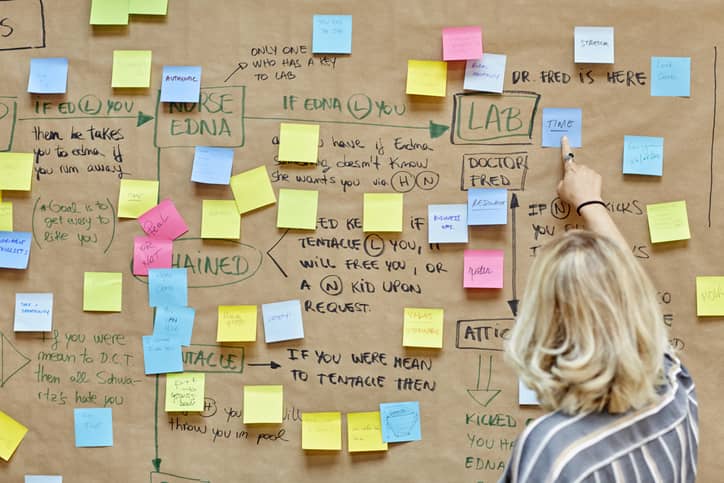The New Year is a great time for celebrating, planning goals for the coming year, making resolutions to meet those goals – and then breaking them by Feb. 1. It’s a cycle that most people repeat every year.
A few studies have even been done to quantify the failure of New Year’s resolutions. Inc. puts that failure rate at about 80%. A University of Scranton study found 77% of people could maintain their resolution for just one week, while only 19% kept them for two years. They cited “paucity of willpower and failure of stimulus control” as two of the biggest reasons for failure.
How do you get into the 19% group? Lean and Six Sigma tools might provide some help.
PDCA and Quitting Smoking
Using Plan, Do, Check, Act (PDCA) is one place to start when it comes to keeping resolutions. You may remember this post about how PDCA can be used for creating a systematic approach to success. Like much of Lean and Six Sigma, it gets into the details, where the real work is done.
If quitting smoking is your New Year’s resolution, you might want to look at a detailed strategy for how to quit smoking using Six Sigma. The Six Sigma tool DMAIC – define, measure, analyze, improve and control – can provide a roadmap for finally leaving cigarettes behind you.
Six Sigma Tools That Can Help Keep Your Resolution
In addition to PDCA and DMAIC, here’s an overview of some tools and how they might work for helping you maintain your resolution goals.
Five Whys
The Five Whys can address the “failure of stimulus control” that the university study found is one of the biggest roadblocks to success with resolutions. The Five Whys gets to the root causes of why you behave in a certain way, which can then help you eliminate certain behaviors.
In a way, the Five Whys asks you to regain the curiosity you had as a kid, questioning things until you get an answer. It usually takes five questions to get to the root cause and find solutions.
For example, by asking yourself why you are eating more calories than you burn each day, you might discover that you unconsciously munch far more than you thought while binging a show on Netflix. Or, if you ask why you overspend your budget each month, you might discover it’s time to cut back on time spent on Amazon.
You may also enjoy: How The Five Whys Can Find The Root Cause of Operational Problems
Kaizen Event
Becoming organized is another frequent resolution. Nothing can get you organized quite like a Kaizen Event. Taken from the Japanese word that means “change for the better,” Kaizen can help you not only make improvements, but make improvements that last.
A Kaizen Event is essentially designed to get all parties involved to focus on a specific issue exclusively, mapping out the situation, finding the problems and coming up with solutions.
For example, getting the family together to better organize daily household chores can be a complicated task. Holding a Kaizen Event can help you define the problems, use data and insight to develop and implement solutions, and then observe the results. At that point, you can make further adjustments to make even better improvements.
You can read about how Kaizen was put into action at the Community Kitchen & Food Pantry of West Harlem. It may help give you an idea of how focusing on solving issues in one area can lead to continued success.
Other Tools to Use
So, you’ve used the Five Ways to get to the root cause of an issue. You’ve had a Kaizen Event with everyone involved – or just yourself – to identify the problem and brainstorm solutions. You’ve committed to evaluating the outcome and adjusting to make further improvements.
But what specific tools might you use along the way? Here are a few gems from the Lean toolbox.
5S: This stands for sort, set in order, shine, standardize and sustain. The 5S approach involves setting up a better system and sustaining the improvements.
Value Stream Mapping: If you’re looking to improve a routine process – your daily commute, for example, or making and serving dinner – Value Stream Mapping is a tool that breaks down each step of the process, allowing you to determine what is useful and what can be eliminated.
Cause-Effect Diagram: This is frequently used with the Five Whys. It gives a visual representation of the causes for errors or waste in a process.
Theory of Constraints: An insightful way to look at what is causing bottlenecks in the process, the Theory of Constraints can help you better understand why you’re not accomplishing your resolution goals and eliminating whatever is getting in your way.
Will any of this magically help you accomplish your resolutions? No. But, it helps to read about ways to make changes in your life that are long lasting. Lean and Six Sigma offer a different way to look at your resolutions. They could provide just the tools you need to succeed this time around.



